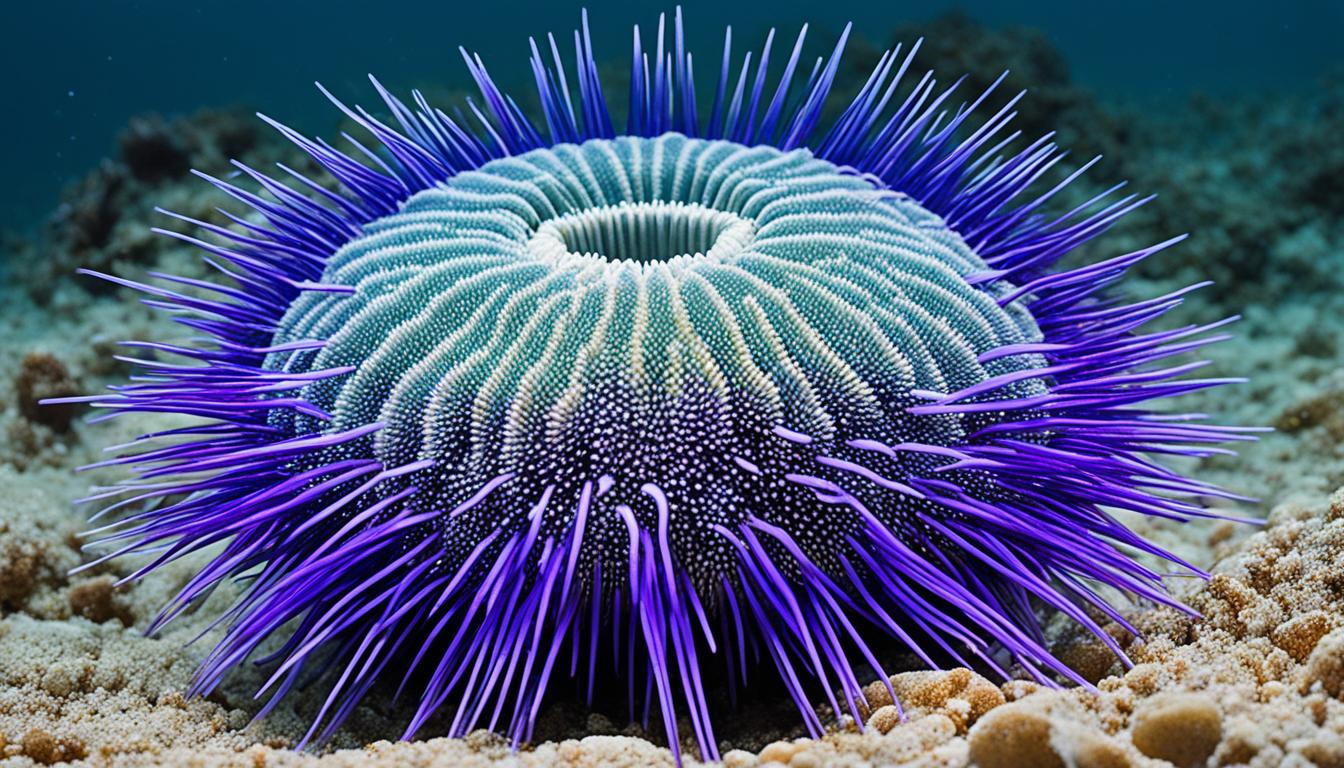Tigers, magnificent creatures known for their strength and beauty, have a fascinating way of establishing and defending their territories. In this article, we will delve into their territorial behavior, communication methods, and the challenges they face in today’s world.
Key Takeaways:
- Tigers are territorial and usually solitary in nature.
- They mark their territories through visual signals, scent marks, and vocalizations.
- The size of their territories varies based on prey density and seasonality.
- Male tigers have larger territories than females, and territories may overlap with multiple females.
- Tigers are mainly active at night and engage in grooming to maintain their coat.
Tiger Territorial Behavior
Tigers are fascinating creatures with unique territorial behaviors. Understanding their behavior is crucial for protecting these endangered animals. Let’s delve into the world of tiger territorial behavior and explore the importance of protecting tigers in the wild.
Tiger Behavior
Tigers are solitary animals, and their territories can vary in size. Male tigers generally have larger territories compared to females, which may overlap with the territories of multiple females. Tiger territories are established based on prey availability, with an abundance of prey influencing the size of the territory.
Tigers use various methods to communicate and defend their territories. They mark their territories through scent-marking and vocalizations, allowing other tigers to recognize their presence. Mating is another important aspect of tiger behavior, with males seeking out females within their territory or engaging in physical confrontations with resident males to acquire territory.
Protecting Tigers
“Preserving tiger territory is essential for the survival of these majestic animals. By conserving their habitats and addressing the threats they face, we can contribute to their long-term survival.”
Endangered Tigers require our protection. Habitat destruction, fragmentation, and poaching have significantly reduced their population. It’s crucial to support conservation efforts, such as habitat restoration, establishment of corridors for genetic diversity, and anti-poaching measures. Through these efforts, we can help protect the mesmerizing tiger and ensure a future where they continue to roam freely in their territories.
| Threats to Tiger Territories | Conservation Efforts |
|---|---|
| Habitat destruction and fragmentation | Habitat restoration |
| Poaching | Anti-poaching measures |
| Lack of genetic diversity | Establishment of corridors |
By addressing these threats and supporting conservation initiatives, we can ensure that tigers have a safe and secure habitat to establish and defend their territories. Together, let’s protect the majestic tiger and preserve their place in the wild.
The Decline of Tiger Territory
Tigers, one of the most endangered feline species, are facing a severe decline in their territories. With fewer than 4,000 free-ranging tigers left in the world and three subspecies already extinct, urgent conservation efforts are necessary to protect these magnificent creatures.
Habitat destruction, degradation, and fragmentation have led to a staggering loss of 93% of the tigers’ historical range. Tigers require vast swaths of habitat to thrive, but human activities have disrupted and fragmented their habitat. This fragmentation not only increases the risk of inbreeding but also makes tigers more vulnerable to poaching, a major threat to their survival.
The destruction of tiger habitat contradicts the cultural reverence and importance placed on these majestic animals. It is crucial that we prioritize tiger conservation and work towards restoring and protecting their territories. By conserving their habitat, establishing corridors for genetic diversity, and implementing measures to combat poaching, we can ensure the survival and prosperity of tiger populations for future generations.
| Tiger Conservation | Tiger Population | Tiger Species |
|---|---|---|
| Urgent efforts needed to protect and restore tiger habitat | Less than 4,000 free-ranging tigers remaining | Three subspecies already extinct |
| Habitat destruction and fragmentation threaten tiger territories | Loss of 93% of historical tiger range | Human activities disrupt tiger habitats |
| Conservation measures include establishing genetic corridors | Tigers at risk of inbreeding and poaching | Tiger populations require urgent protection |
Tiger Communication and Territory Defense
Tigers possess intricate communication methods that play a vital role in both defending their territory and attracting potential mates. Vocalizations, scent-marking, and body language are all key elements of their communication repertoire.
Tiger Vocalizations
Tigers have a diverse range of vocalizations, each serving a specific purpose. These include growls, grunts, moans, snarls, chuffs, and hisses. Through these vocalizations, tigers can express dominance, aggression, territorial warnings, or communicate their presence to other tigers in the area.
Tiger Scent-Marking
Scent-marking is another essential form of communication for tigers. They use their urine, feces, and rubbing against trees to mark their territory and indicate their reproductive status. By leaving these olfactory messages, tigers can establish their presence and warn other tigers to stay away from their territory.
Tiger Body Language
In addition to vocalizations and scent-marking, tigers also rely on body language to communicate. They use various visual cues, such as ear position, tail movements, and facial expressions, to convey their intentions. These subtle gestures help to establish dominance, express aggression, or signal submission during territorial disputes.
| Vocalization | Meaning |
|---|---|
| Growls | Expressing aggression and dominance |
| Chuffs | Greeting and social interaction |
| Moans | Signaling territorial boundaries |
| Snarls | Warning or threatening other tigers |
The combination of vocalizations, scent-marking, and body language creates a comprehensive communication system for tigers. These methods help them establish and defend their territories, avoid conflicts, and attract potential mates. Understanding these communication cues is crucial in studying and conserving these majestic creatures.
Tiger Mothers and Offspring
Tiger mothers play a vital role in raising and nurturing their cubs. They are affectionate, protective, and attentive, ensuring that their young have the best chance of survival. Mothers provide food, protection, and affection to their cubs, teaching them essential hunting techniques and behaviors. Cubs learn by imitating their mother’s actions, observing her as she stalks, hunts, and catches prey. This hands-on approach prepares them for life in the wild.
Playing is an essential behavior for tiger cubs. Through play, they learn important life skills such as hunting, pouncing, and climbing. It helps them develop their physical abilities and coordination. Play also strengthens the bond between mother and cubs and enables them to establish social hierarchies among siblings. This cooperation and fair play within the family unit help foster strong relationships and cooperation later in life.
Unfortunately, tigers in captivity often face unfavorable conditions that can negatively impact their well-being and the bond between mothers and cubs. Many tigers are held in small enclosures, depriving them of the space and freedom they need to thrive. Separation of cubs from their mothers is also common practice in some facilities, disrupting the natural nurturing process. These conditions can lead to stress, boredom, and behavioral issues among captive tigers.
| Tiger Mothers and Offspring – Comparing Wild vs. Captivity | Wild Tigers | Captive Tigers |
|---|---|---|
| Mother-Cub Bond | Strong and nurturing | Often disrupted through separation |
| Teaching and Learning | Natural hunting skills taught by the mother | Limited opportunities for learning |
| Play Behavior | Essential for skill development and bonding | Restricted due to space limitations |
Understanding the importance of tiger mothers and the role they play in raising their offspring is crucial for their conservation. Efforts should be made to improve the conditions of captive tigers, allowing them to express their natural behaviors and ensuring that the bond between mothers and cubs is preserved. By respecting and protecting the maternal instincts of tigers, we can contribute to the well-being and conservation of these magnificent creatures.
Tigers in Captivity
Tigers in captivity face numerous challenges and often suffer from inadequate living conditions. Many thousands of tigers are used in circuses and the tourism industry, where they are forced to perform tricks for entertainment. These tigers are deprived of their natural behaviors, confined to small enclosures, and subjected to stress and physical harm.
Tigers held in breeding farms and temples also endure harsh conditions. Tigers on breeding farms are kept in small, barren enclosures, leading to boredom and frustration. The separation of cubs from their mothers, a common practice in these facilities, disrupts the natural social structure and inhibits the cubs’ development.
“The conditions in which captive tigers are kept are often far from their natural habitat, resulting in physical and mental distress. It’s crucial that we address the welfare of captive tigers and provide them with environments that allow them to express their natural behaviors.”
Furthermore, tigers held in temples live in unnaturally close proximity to humans, which can have detrimental effects on their well-being. These captive facilities are unable to replicate the vast territories and diverse environments that tigers require to thrive.
| Challenges in Captivity | Impact on Tigers |
|---|---|
| Confinement to small enclosures | Physical and psychological stress |
| Lack of stimulation and enrichment | Boredom and frustration |
| Separation of cubs from mothers | Disrupted social structure and stunted development |
| Proximity to humans | Increased risk of disease transmission and behavioral abnormalities |
The number of tigers in captivity exceeds those in the wild, highlighting the urgent need for conservation efforts to protect these magnificent creatures and provide them with suitable living conditions.
Tigers in the Wild and Conservation Efforts
Tigers in the wild are facing grave threats to their survival, making conservation efforts crucial for the protection of these magnificent creatures. Habitat loss, fragmentation, and poaching are the primary challenges that tigers and their territories confront.
In order to safeguard tiger populations, conservation initiatives focus on preserving and restoring their natural habitats. This involves establishing corridors that connect fragmented areas, allowing for genetic diversity and the movement of tigers. Additionally, combating poaching is a critical aspect of tiger conservation, as illegal hunting poses a severe threat to their population.
Monitoring tiger populations is a vital component of conservation efforts. Techniques such as camera trapping and DNA analysis help researchers gather data on population size, distribution, and behavior. This information enables conservationists to formulate effective strategies to protect tigers and their territories.
“The tiger is a unique and iconic species that plays a significant role in maintaining the balance of ecosystems. Conserving tigers not only protects a magnificent creature but also contributes to the preservation of entire ecosystems.”
– Dr. Sarah Johnson, Wildlife Conservation Society
By understanding the importance of tiger conservation and taking action to protect these remarkable animals, we can ensure a future where tigers thrive in their natural habitats, and their territories remain preserved for generations to come.
| Threats to Tigers | Conservation Efforts |
|---|---|
| Habitat loss and fragmentation | Preserve and restore natural habitats, establish corridors for genetic diversity |
| Poaching | Combat illegal hunting, strengthen law enforcement efforts |
Conclusion
Tigers are remarkable creatures that exhibit complex social behaviors and unique communication methods to establish and defend their territories. Through visual signals, scent marks, and vocalizations, they create a network that connects them to other tigers in their range. However, their habitats are under severe threat due to habitat destruction and poaching, pushing these majestic animals towards the brink of extinction.
The conservation of tiger territories is crucial to ensure the survival of these magnificent creatures. Efforts must be directed towards protecting and restoring their habitats, establishing corridors for genetic diversity, and combating poaching. Monitoring tiger populations through techniques like camera trapping and DNA analysis is vital in understanding their numbers and implementing effective conservation strategies.
It is important for us to recognize the significant role that tigers play in the ecosystem and take action to protect them. By understanding their true nature and the importance of their territories, we can change our actions and contribute to the preservation of these iconic and endangered animals. Together, we can make a difference and ensure a future where tiger territories thrive and tigers continue to roam the wild.
What Similarities and Differences Are There in How Lions and Tigers Establish and Defend Their Territories?
When it comes to lions territorial establishment and defense, there are both similarities and differences compared to tigers. Both big cats mark their territories using scent markers and vocalizations. However, lions often form prides to defend their territories, while tigers are solitary creatures and rely on their individual strength. These variances influence their territorial strategies and social dynamics.
Do Lions Use Grooming as a Form of Territory Defense?
Lions grooming in their pride plays a crucial role in their social interactions, but it is not directly linked to territory defense. Grooming fosters unity within the pride, strengthens bonds, and maintains social order. However, when it comes to defending their territory, lions rely on other means, such as roaring, scent marking, and physical confrontations with intruders.
FAQ
How do tigers establish and defend their territories?
Tigers establish and defend their territories through visual signals, scent marks, and vocalizations. They use these methods to communicate their presence and reproductive status to other tigers.
What is the territorial behavior of tigers?
Tigers are solitary and territorial animals. Male tigers have larger territories than females, and they may overlap with multiple females. They mark their territories through scent-marking and vocalizations, and territorial disputes are usually solved through displays of intimidation.
What is the decline of tiger territory?
Tigers are one of the most endangered felines, with habitat destruction, degradation, and fragmentation leading to a loss of 93% of their historical range. This fragmentation increases the risk of inbreeding and makes tigers more vulnerable to poaching.
How do tigers communicate in their territory?
Tigers communicate through various methods such as vocalizations (growls, grunts, moans, snarls, chuffs, hisses), scent-marking, and body language (ear position, tail movements, facial expressions). Their distinctive stripes also help them identify each other.
What is the relationship between tiger mothers and their offspring?
Tiger mothers are affectionate, protective, and attentive towards their cubs. They raise their cubs until they can survive on their own, teaching them hunting techniques and providing food, protection, and affection. Cubs learn by imitating their mothers’ behavior.
What are the challenges faced by tigers in captivity?
Tigers in captivity often face poor conditions, such as small enclosures and separation of cubs from their mothers. They may also be used in circuses and the tourism industry, where they are forced to perform tricks for entertainment. These conditions can contribute to boredom, frustration, and mental and physical suffering.
What are the conservation efforts for tigers in the wild?
Conservation efforts aim to protect and restore tiger habitat, establish corridors for genetic diversity, and combat poaching. Monitoring tiger populations using techniques such as camera trapping and DNA analysis is crucial for their conservation.
What can we conclude about tiger territories?
Tigers are majestic creatures with complex social behaviors and communication methods. Understanding their territorial behavior can help in protecting them from extinction and conserving their natural habitats.










